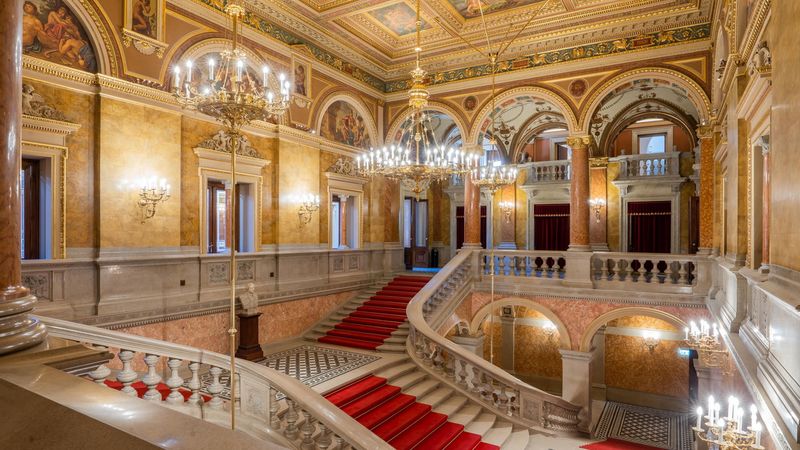
The bifurcated stairs in the foyer lead up to the grand staircase, where the aesthetic experience becomes even greater.
Paintings by Mór Than adorn the nine rectangles of the gilded coffers that embellish the mirrored ceiling above the main stairs. The topics of these are the Waking of Music and the Power of Music. The elongated rectangles along the sides depict the main scene of the contest between Apollo (playing the lyre) and Marsyas (playing the flute), entitled the Judgement of Tholos. According to the mythological story, the river god Tholos decided that Apollo won the contest, and the satyr paid for his insolence by being skinned.
The painting surrounding the chandelier makes references to Hera, Hades, Zeus, and Poseidon. The lesene that runs along the wall depicts three scenes connected to Orpheus: the paintings by Mór Than first show him standing in front of the gateway to the underworld, then bringing Eurydice up from the netherworld, and finally illustrate his death. Allegorical depictions of Fine Art and Architecture are located above the entrance to the Feszty Bar, with the latter holding the plans for the Opera.